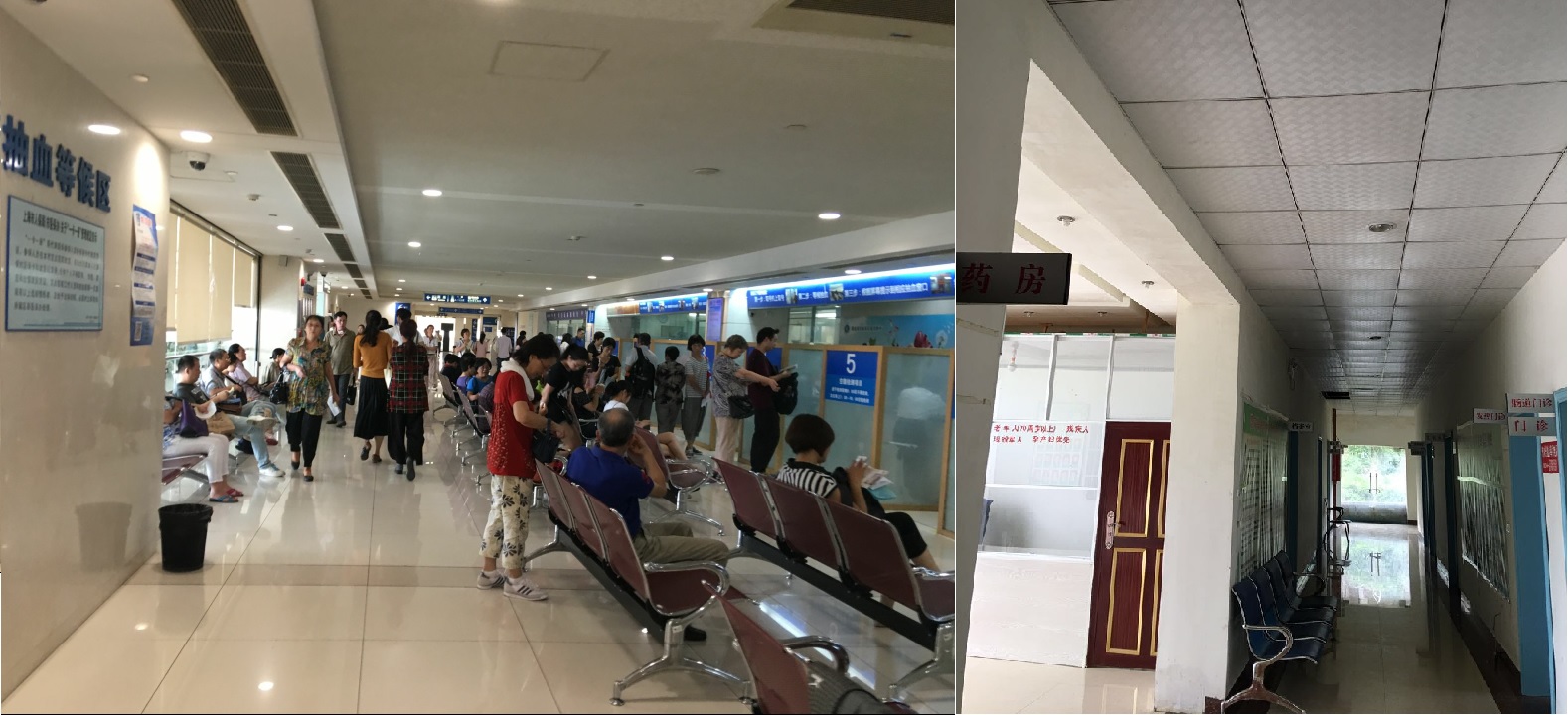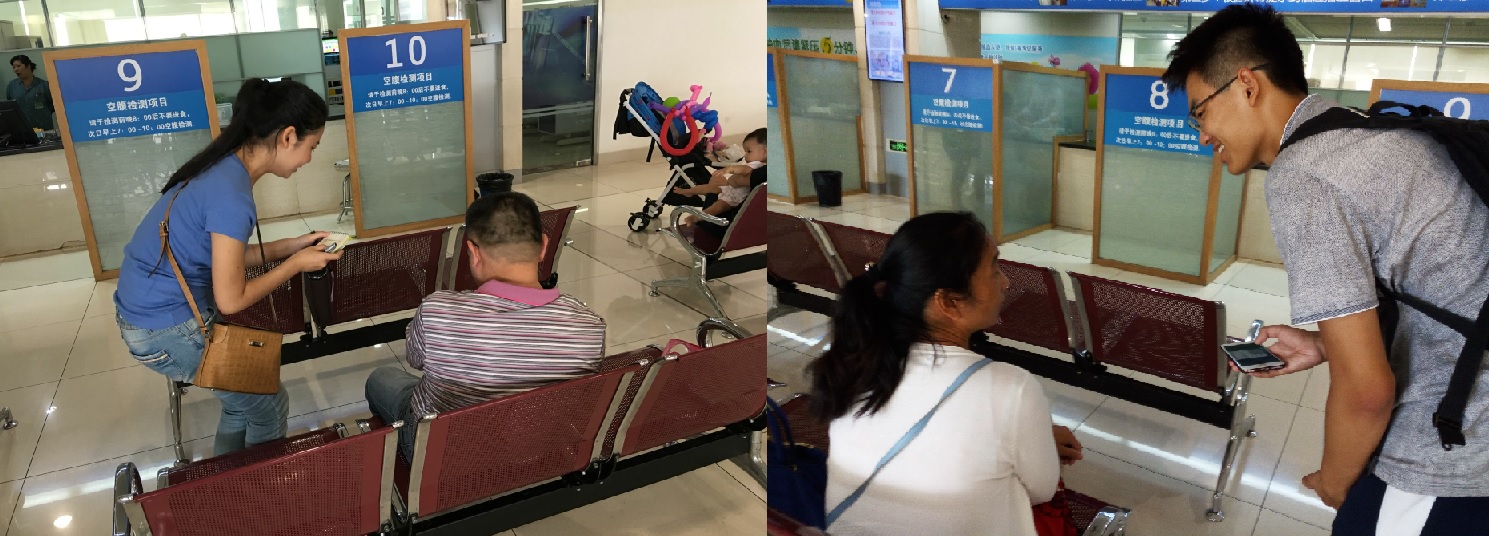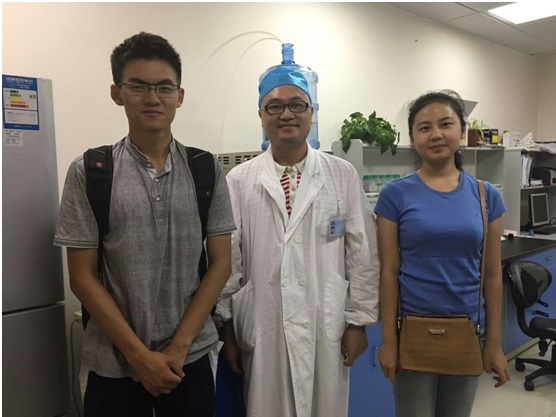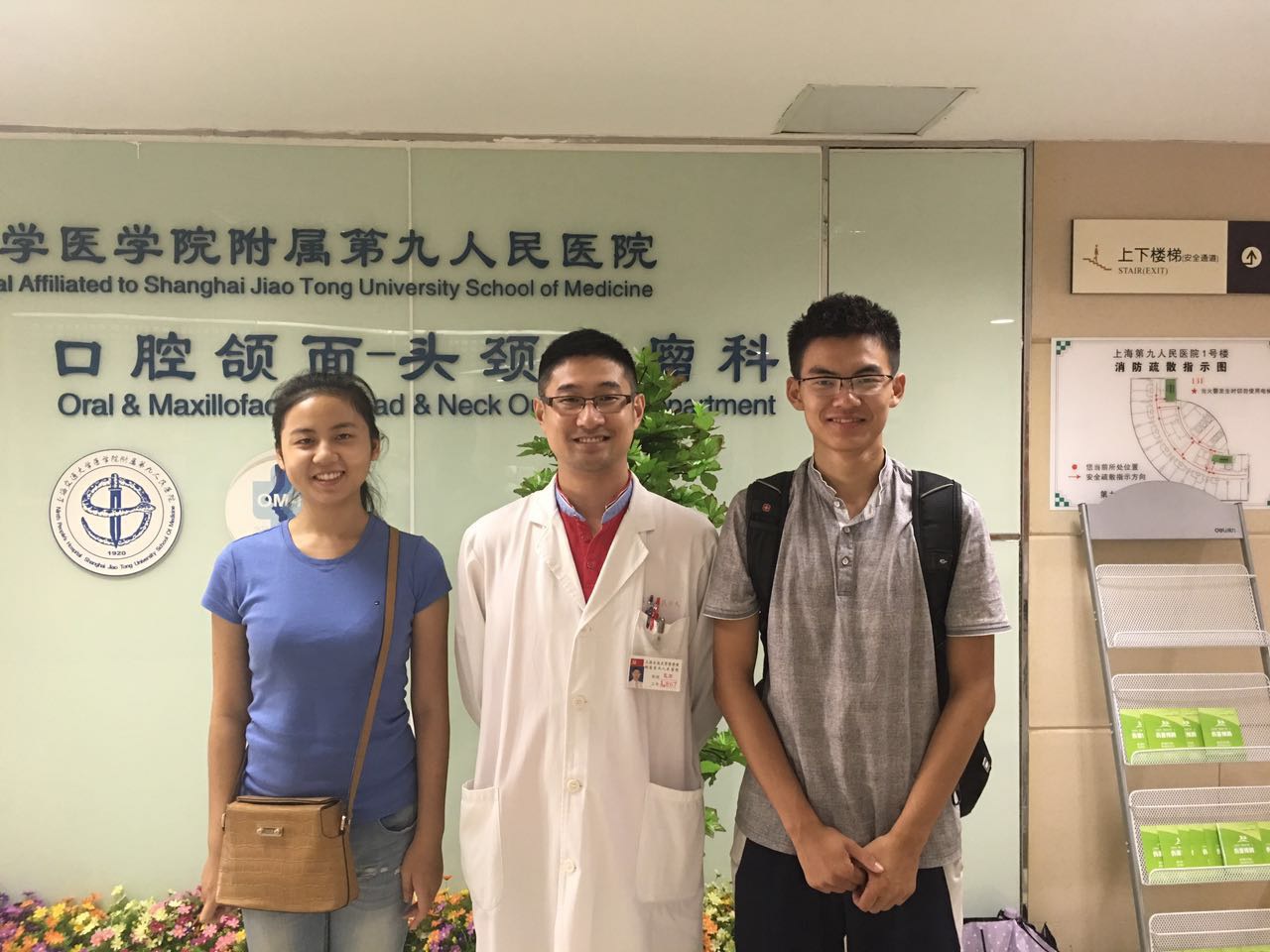Hospital Experiencing
Overview
In order to get a more vivid look at the current situations of hospitals, we went to Ruijin Hospital and No.9 Hospital in Shanghai. We randomly asked some patients there about their points on today’s hospitals and medical service. We also interviewed two doctors at No.9 Hospital about their perspectives toward our project.
Meanwhile, since one of our team members went to Guizhou Province and surveyed grass-rooted hospitals there, we compared them with Ruijin and No.9 Hospital. The result is shocking. In this part, we will show you the incredible differences of working conditions between these hospitals. We hope our project can really help the public to detect certain diseases without crowding into hospital.
Hospitals in Cities vs in Small Towns
We chose Ruijin Hospital in Shanghai and one community, grass-rooted hospital in Guizhou Province to represent hospitals in cities and small towns. Ruijin Hospital is classified as “the third class of Jia level hospital”, which means that it is one of the best hospitals in China. The community hospital is the hospital where people there mostly go to. We mainly compared them in scale, conditions and the flow of people.
When we arrived at Ruijin Hospital, what we felt incredible is its large scale and garden-like environment. We estimated that it has at least ten buildings. There’s a small garden surrounded by the buildings, which can help the patients relax themselves there. The halls and verandas are clean and light. In the out-patient department, there’s even a piano.
But for small hospitals in villages, both the scale and the working conditions are poor. Hospitals at grass-rotted levels usually have only one short building. The place for registering could only be called a reception room, not a “hall”. It can be clearly felt that verandas are darker and narrower.

Figure 1. The Environment of Ruijin Hospital (on the left and middle) and community Hospital (on the right)

Figure 2. Verandas of Ruijin Hospital (left) and community hospital (right)
As for flow of people, there’s also a huge gap between them. We arrived at Ruijin Hospital at 9 o’clock on Friday, and we saw a large number of people queuing there. In front of every service window, large quantities of people are waiting. In China, there’re always the fewest doctors on duty on Friday among the workdays. So we can infer that there should be more people in the other four workdays.
In the hospital we surveyed in Guizhou Province, on the contrary, few people go there. We stayed there for three hours, during which no more than 20 people registered for medical help.

Figure 3. People Queuing at No.9 Hospital (left) and Ruijin Hospital (middle). Few people were at the community hospital (right)
Random Patient Interview
To know people’s attitude toward hospitals and medical service in China, we randomly asked some patients in Ruijin Hospital. Moreover, because we were building a biosensor for detecting service, we focused on patients in clinical laboratory. Our questions are mainly about their points on medical service, their habits of physical examination and what kinds of hospitals do they go.
About their points on medical service, most people we asked thought it is inconvenient to go to see a doctor. They think hospitals are often overcrowded and they need to wait in queue for a long time. It is totally a waste of time. What’s more, they agreed that the modes of procedure are overmuch and many of them are unnecessary. But to our surprise, many patients think the costs for medical help are reasonable and they accept them. Only a mother who brought her baby to get physical detection said the cost for a baby was expensive.
As for habits of physical examination, most people said they don’t get it on time. Only one woman we asked said she would have physical exam once a year and it’s unprompted. When we asked about what kinds of hospitals they went, they gave the same answer: they went to large public hospitals.
We also asked them whether they have used detecting instruments at home. The result is that all the people we asked denied. Interestingly, one patient said that these instruments are short of functions and reliance comparing to those in hospitals. He also explained why people are willing to large hospitals: because smaller ones don’t have the ability to have overall diagnosis, and they cannot make definite diagnosis to many diseases.

Figure 4. Random Patient Interview.
Doctor’s Proposals
We interviewed two doctors at No.9 Hospital. We introduced our project to them and listened to their suggestions. They are very interested in our project and they give many useful advices.
We firstly interviewed Doctor Sun, expert at clinical laboratory of No.9 Hospital. He said the most important thing for our project to become a real product is the precision. We should give the detailed data of the order of epinephrine magnitude. The mainly difference between diagnosis instruments at home and hospitals, he said, is not those in hospitals have more function, but they can give more accurate results. He also pointed out that our product should be stable and anti-jamming. Urine certainly does not have only one ingredient, and we should guarantee our product will not be influenced by other factors.
When asked about the significance of detecting chromaffinoma, he said it was worth doing. “It’s wrong to say the more possible people will get the disease, the more significant your project is,” he said. “For every disease, there’re specific people who are likely to have it,” he smiled, “and for these people, your product is meaningful to them.”

Figure 5. Doctor Sun and Our Team Members
Then we interviewed Doctor Zhou, expert at oncology. He thinks our project are limited to the signals of certain tumors. However, it’s what their signals are, not how to detect the signals that counts. “So if you want to get further appliances, you must know another specific signal of tumors. But you should know finding of signals is a difficult problem worldwide.” Nevertheless, he encouraged us to lucubrate. “It’s an interesting project, and I know many biological companies are doing such experiments.”

Figure 6. Dr. Zhou and Our Team Members




